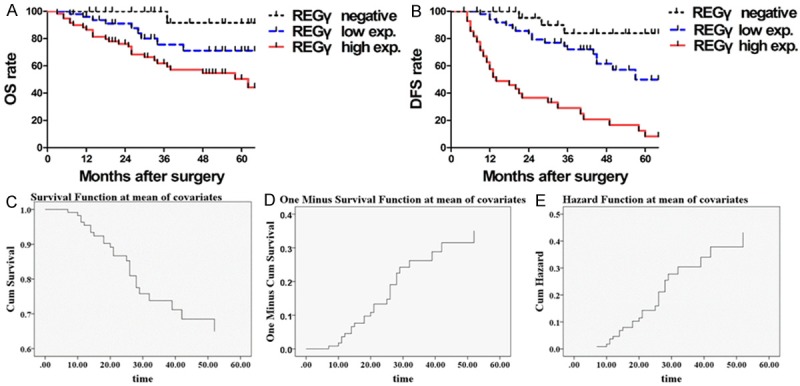Figure 3.

The relationship between REGγ expression and prognoses of patients with breast cancer. A. The Kaplan-Meier graph for overall survival (OS) rate for breast cancer patients: patients with low expression of REGγ had longer OS than those with high expression of REGγ (Log-rank Mantel-Cox Test, P = 0.0351. Hazard Ratio = 0.4949, 95% CI of ratio is 0.2516 to 0.9736) and poor OS rate compare to REGγ negative patients (Log-rank Mantel-Cox Test, P = 0.0406. Hazard Ratio = 0.2913, 95% CI of ratio is 0.08157 to 1.040). B. Kaplan-Meier graph for disease-free survival (DFS) for patients: patients with low expression of REGγ had longer DFS than those with high expression of REGγ (Log-rank Mantel-Cox Test, P < 0.0001. The median survival time in REGγ low expression group was 57 months, and 14 months in REGγ high expression group, Hazard Ratio = 4.071, 95% CI of ratio is 3.505 to 4.638), however, has shorter DFS as compared to those with negative expression of REGγ (Log-rank Mantel-Cox Test, P = 0.0405. Hazard Ratio = 2.432, 95% CI of ratio is 0.9813 to 6.027). As showed by survival function diagram (C), one minus survival function diagram (D) and hazard function diagram (E), REGγ expression played role as an independent prognostic factor for the breast cancer (Cox Regression analyses, P = 0.008, OR = 4.369, 95% CI is 1.482 to 12.880).
